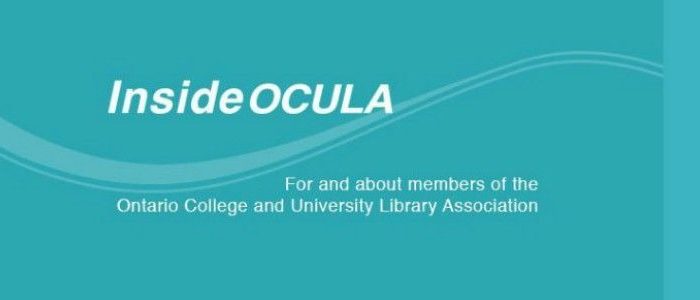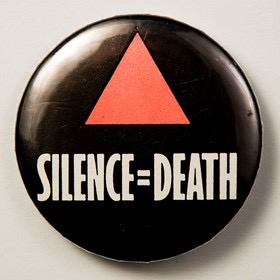Starting with accessibility: A strategy for developing video tutorials
By January 2014, public institutions across Ontario are required to meet the Information and Communications Standard of the Accessibility for Ontarians with Disabilities Act (AODA), which aims to provide accessible web content for all Ontarians based on the standards set out by the Web Content Accessibility Guidelines (WCAG). College and university libraries are constantly striving to deliver effective online resources and services. The AODA provides a new framework for inclusive and accessible online tutorials that result in improvements for all our users.
In this context, I took on a practicum project at the University of Toronto’s Ontario Institute for Studies in Education (OISE) Library, with the goal of producing a series of video tutorials that would meet the needs of the OISE community as well as the requirements of the AODA. I established a new process for producing and delivering accessible tutorials and ultimately produced four new videos for the OISE Library.
Here, I share three key recommendations that emerged from the project: 1) make accessibility your design criteria from the beginning; 2) know the strengths and limitations of the production technology; and 3) produce tutorials that suit the video style of the web environment.
The most important lesson in making the video tutorials is that accessibility considerations should be the fundamental design criteria. The WCAG are authored by the World Wide Web Consortium (W3C) and have become the standard for creating accessible web content. Within the WCAG are success criteria that rate the degree to which web content is accessible using three accessibility levels: A, AA, and AAA. Although the AODA only requires institutions to produce content that meets level A for January 2014, we decided to aim for AAA, where possible.
In some cases we succeeded; for example, by providing content alternatives in the form of screen-readable scripts, audio, closed captions, and downloadable video. In other cases we struggled. For example, we rely partially on YouTube’s Flash video format, despite the fact that the Flash player is often inaccessible to keyboard-only computer users and many screen-readers have difficulty describing the Flash player controls. To address this, we decided not to send users directly to our YouTube page to watch the videos. Instead, we embedded each video on its own dedicated page with links to all the alternative formats of the content, including: the accessible PDF script, an .mp3 audio file, an .mp4 video file, and the embedded YouTube video with closed captions.
My second key finding is that video producers should be experts with a range of technical requirements and software options. We knew in advance that we wanted to provide alternative accessible means of sharing the videos’ contents. Therefore, I decided to start with a script that would be read and edited by team members. I then recorded myself reading the script using Garageband software. These two steps ensured that the script would match the audio and the closed captions, and that an audio-only file would also be available for downloading. I used the script to guide me through a visual screen recording of the tutorial content and also produced it as an accessible PDF for the video tutorials page.
The screen recording itself became an intense site of learning. I wanted the resolution of the screen recordings to be as high as possible owing to the fact that visual accessibility was a fundamental design criterion. I captured the screen at a resolution that YouTube considers high definition (720p), and used the zooming function of the web browser to increase the screen real estate taken up by my recordings. From here I moved on to combining the audio and video in the editing stage using iMovie. Understanding screen resolutions and the recording limits of my computer all became important considerations in the production of these tutorials.
My third key finding is that video content for the web needs to deliver its message in a style that matches the viewers’ expectations. The scholarly literature on library video tutorials suggests that I had only 90 seconds to get my learning objective across, and that viewers would actually prefer that content be delivered in 60 seconds. Bowles-Terry, Hensley, & Hinchliffe, (2010) suggest that online videos are meant to teach quick and helpful research skills, while more nuanced and thorough research skills continue to be best taught face-to-face with a librarian. In order to deliver the objective within the first minute, I flipped the structure of the videos so that one sees the skill performed first (for example, a database search) and the context is provided second (for example, information about the database itself).
Ultimately, I hope that the new tutorial pages will benefit all patrons by providing more delivery options and supporting the W3C’s aim to meet a broader variety of needs, preferences, and particular situations (http://www.w3.org/WAI/intro/accessibility.php).
For more information contact Caleb Domsy at caleb.domsy@utoronto.ca.
Further reading:
Bowles-Terry, M., Hensley, M., & Hinchliffe, L. (2010). Best practices for online video tutorials in academic libraries. Communications in Information Literacy, 4(1), 17–28.
Oud, J. (2009). Guidelines for effective online instruction using multimedia screencasts. Reference Services Review, 37(2), 164–177. doi:10.1108/00907320910957206
Oud, J. (2011). Improving screencast accessibility for people with disabilities: Guidelines and techniques. Internet Reference Services Quarterly, 16(3), 129–144. doi:10.1080/10875301.2011.602304
World Wide Web Consortium W3C. (2012, October). Web content accessibility guidelines overview. Retrieved from: http://www.w3.org/WAI/intro/wcag.php
Caleb Domsy has a BSc from the University of Guelph and a BEd from the University of Western Ontario. He is Master of Information student at the Faculty of Information, University of Toronto.


